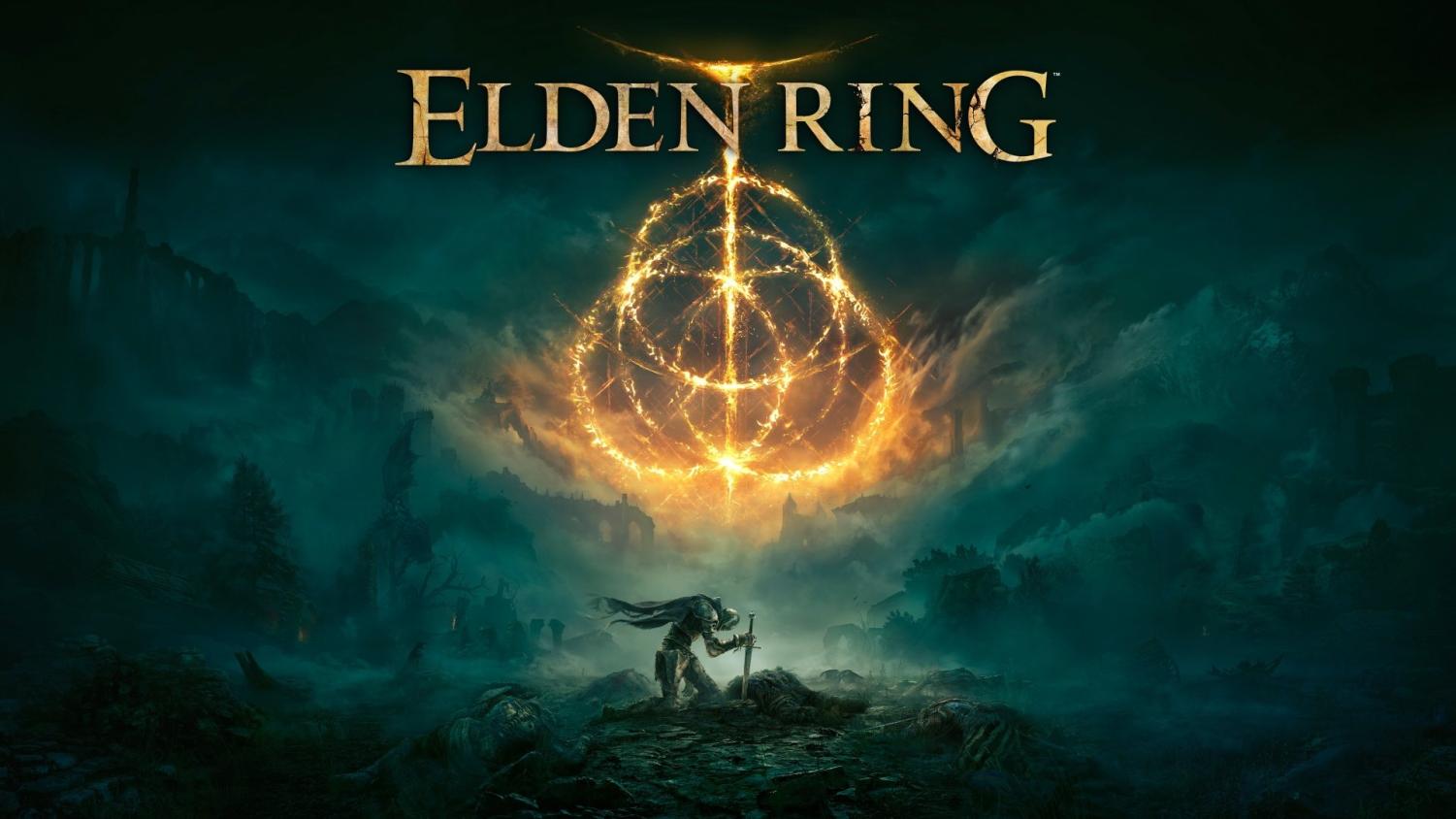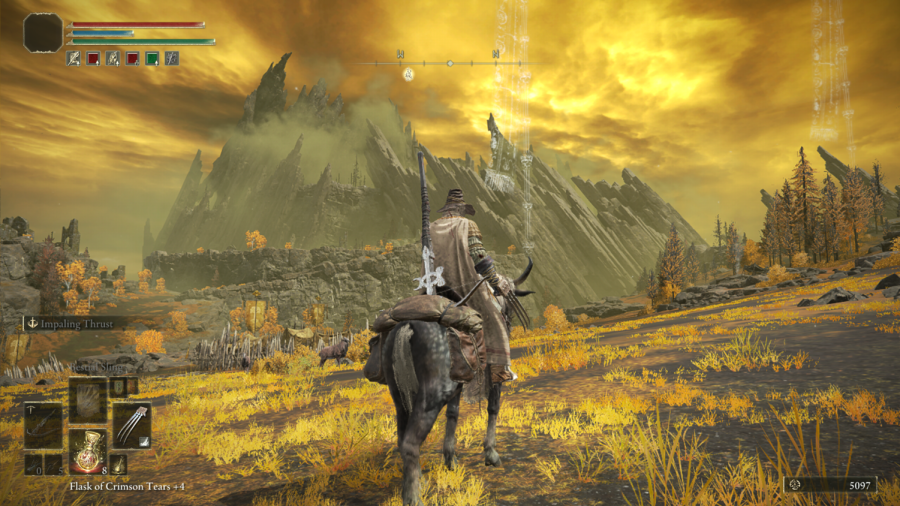Elden Ring Review
May 6, 2022
Elden Ring, Japanese game studio FromSoftware’s latest video game, was launched in late February following five years of development. The game’s release was highly anticipated and met with nearly universal praise. Now that I have finished the game myself, it’s time to offer some extensive insight.
The game features similar gameplay to other well-known FromSoftware titles such as Dark Souls and Bloodbourne—in other words, the game is an action RPG in which players explore and battle their way through a magical, medieval world. However, unlike the previous “Soulslike” games that FromSoftware has released, Elden Ring is the first to have an open world. This means that players have the freedom to roam the entire world of the game instead of being forced to complete the game following a predetermined route.
Elden Ring, like most other Soulslike games, features a leveling system that allows players to upgrade certain attributes for their characters by spending points they earn from defeating enemies. Upgrading different attributes allows players to access different parts of the game. For example, spending many points on strength upgrades unlocks the ability to hold extremely large swords and hammers, while prioritizing intelligence upgrades lets players cast powerful spells. Leveling up also allows players to more easily work their way through areas that contain stronger foes.
Elden Ring also contains a great number of highly challenging enemies, or bosses. While players are not required to defeat many of the bosses, a handful of the game’s most powerful must be killed in order to progress. Additionally, many bosses in Elden Ring are simply part of the world, meaning players will likely find dragons and other powerful beings roaming around outdoors. This is another way in which Elden Ring differs from its Soulslike predecessors, as bosses in previous titles have been located exclusively in enclosed and inescapable arenas.
Environment diversity and map design are also a core focus of Elden Ring. The world is both vibrant and dense; each area has a completely unique aesthetic. Players can explore a plethora of different terrain including gentle hilltops, volcanic ruins, snowy mountains, undercity sewers, and even giant anthills. The number of environments is so numerous that only the game’s most thorough explorers will experience all it has to offer.
Story
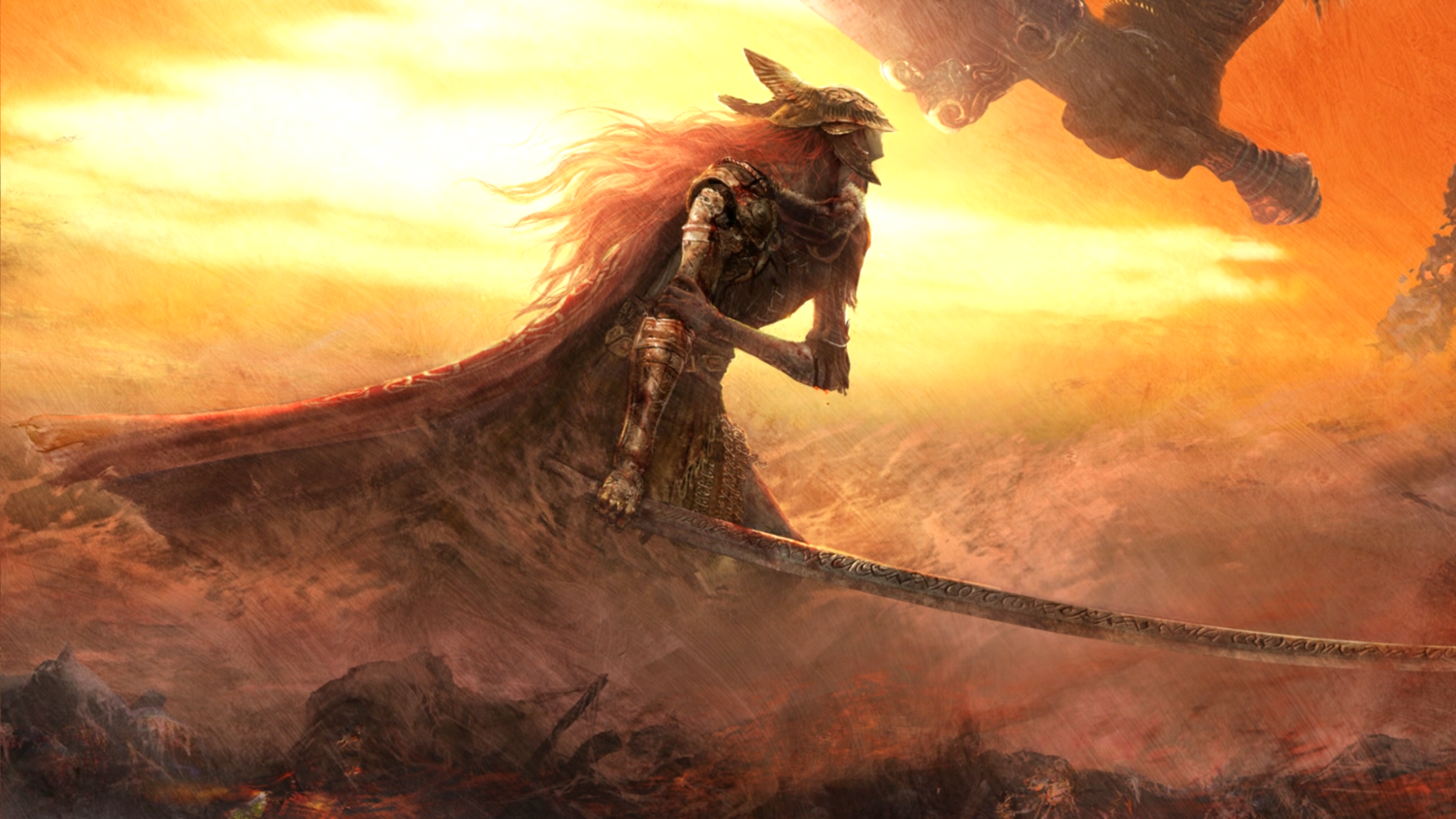

While Elden Ring is an open world game, its main story is still somewhat rigid—there are some key steps that must be taken in order to complete it. The game’s main story is laid out for players in an introductory cutscene before any gameplay occurs: the Elden Ring, a sort of world order that was shattered by demigods, must have its power claimed by the player in order to bring some sort of change to the Lands Between. If players successfully claim the power of the Elden Ring, they become Elden Lord, and can then finish the game’s story.
However, in order to claim the Elden Ring’s power, players must defeat the aforementioned demigods, which are major bosses in the game. Each of these demigods possess a fragment of the Elden Ring, making it necessary for players to fight at least a few in order to progress to the end of the game.
While the game does play a few cutscenes that contain relevant lore, most of Elden Ring’s story is written into brief item descriptions, environmental hints, and NPC dialogue. While this makes the storyline quite difficult to follow without paying close attention to detail, it is cleverly written nonetheless. The game’s lore is intricate and players must work hard in order to track what is going on and why.
For example, if players find an item that includes details about a certain character in the story, that item’s location is also relevant to the newly discovered lore. Perhaps an NPC’s armor is found in a prison cell in a castle. Players would be expected to make the connection that the NPC was likely imprisoned and killed in that cell, and even further assume that the castle’s occupants were responsible for that NPC’s death.
Every single item and weapon in the game is placed deliberately to tell a bigger story about not only the main character’s of Elden Ring, but about the world where that story takes place. It would be an understatement to say that more than half of the game’s story is told in this way.
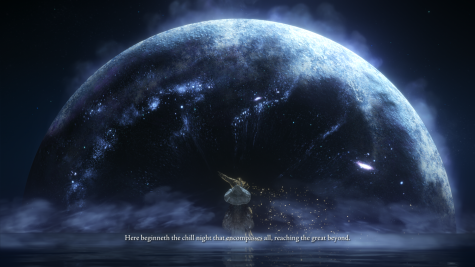
Despite having an intricately weaved plot, the story of Elden Ring is not set in stone. There are six known endings to the game, two of which have radically different ending cutscenes from the remaining four. One of the endings occurs by default if players have not progressed any of Elden Ring’s NPC questlines, while the other five are achievable through different NPCs all over the game. I finished my playthrough of Elden Ring with the Age of the Stars ending, one of the two that play a very unique cutscene. One of the main themes of this ending is that I am ridding the world of “destined death,” or divine fate.
Most of the game’s story takes place after the rule of the Greater Will, which is a god that determined the fate of all living things before the shattering of the Elden Ring. Although the Greater Will has its power restored alongside the power of the Elden Ring in the default ending, players who complete the Age of the Stars ending replace the Greater Will with the Moon God, who opts not to determine the fate of all living beings. I got this ending by completing the questline of Ranni, an important NPC who appears early in the game. Besides giving me a unique ending, the questline also gave me many strong items and led me to a well-hidden boss.
Players can complete NPC questlines by doing what different characters ask of them at several points throughout the game. If all of an NPC’s requests are fulfilled, its questline is considered complete and players could be rewarded with anything from nothing to a strong weapon to a game ending.
Most of Elden Ring’s NPCs feature extensive dialogue and voice acting. The vocal performances within the game are impressive given just how many there are, and each breathes a bit of life and character into an already lively game. All of Elden Ring’s characters and lore come together and form a world comparable to Tolkien’s Middle Earth in both scale and depth. The only difference between the two is that players can go wherever they want in Elden Ring.
Map and Exploration
Elden Ring’s world map is massive—but not in terms of physical area. Boasting a size of almost 80 square kilometers, Elden Ring’s map has an area that, while large, is eclipsed by many other contemporary open world titles. Where the game’s map truly shines is its density. Elden Ring’s world is packed with countless unique locations, none of which are lacking in their explorability. Each of the six main regions contains a set of unique subregions, and each subregion has its own set of enemies, bosses, items, and lore.
The game starts off by putting players in the first area, Limgrave. The area, while comprising only a small portion of the full map, offers countless hours of exploration that is both engaging and challenging. Upon reaching the first checkpoint, players are given complete freedom to choose where they want to go: directly ahead is an optional boss, while a lake with ruins and a dragon lies to the east. Even further east is the magical and bear-infested Mistwood forest, which lies south of a swamp and church. Players who journey south will find an immense building on stone legs—a “Walking Mausoleum”—and the oceanside Castle Morne. In the northwestern corner of Limgrave, Stormveil Castle awaits players who are ready to make progress in the game’s story.
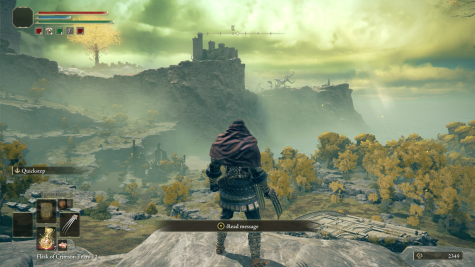
These are just a few of the exploration opportunities for players who are itching to get lost in Elden Ring’s world. In addition to the aforementioned areas in Limgrave, there are several dungeons and catacombs—many of which are hidden away in dark corners and rock faces. Each of these areas has a final boss, rewarding players who explore with an extra challenge and a new experience.
Elden Ring also incentivises players to explore by giving them a method of travel: a magical horse named Torrent that can be summoned with the click of a button. The horse can be mounted and dismounted freely as long as players are not in a dungeon or castle. With the additional abilities of a double jump and the ability to attack from horseback, Torrent opens up a world of possibilities for players to reach high places and quickly move through the map.
While Limgrave is complex, it is still just the first area. Beyond Limgrave to the east lies Caelid, a red-skied region with an inner swamp, a ghost town, the heavily fortified Redmane Castle, and much more. North of Limgrave is Liurnia of the Lakes, which is a central swamp surrounded by cliffs and a plateau. The swamp is full of ruins and contains a mysterious castle: Raya Lucaria Academy. North of Liurnia of the Lakes, the map opens up into a massive section with three more areas: Mount Gelmir, Altus Plateau, and Leyndell, Royal Capital. Mt. Gelmir is home to a mountain with a summit point and the lava-filled Volcano Manor, while Altus Plateau is a sunny, open outdoor area with autumn-like imagery. Leyndell, Royal Capital is an intricate golden city built on top of an equally intricate system of sewers and tunnels.
Beyond these areas lies the Mountaintop of the Giants and the Consecrated Snowfield, both of which are icy wonderlands with limited visibility due to many blizzardy conditions. All areas hold just as many exploration possibilities as Limgrave, but that still isn’t all of Elden Ring’s world.
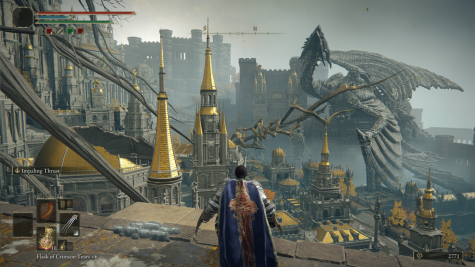
There’s more to the map than what meets the eye. There are three other areas in Elden Ring that lie completely below ground. This is where the game starts to get very strange, as the scenery in these underground areas doesn’t always reflect the fact that they are, in fact, underground. One such area, Siofra River, features a perpetually starry night sky along with a smattering of grass or a patch of trees here and there. Another area, the Lake of Rot, features a lake and ruins system so immense that it’s easy to forget you’re underground while exploring it.
Exploring each of these areas can take hours upon hours at a time, but no area overstays its welcome. Elden Ring’s pacing is dependent on the player: if someone starts to get bored with a certain place, they have the freedom to move somewhere else instead. Not only does this help players better appreciate each area, but it also blurs the lines between defined regions enough to where exploring one area often means ending up in another. Elden Ring’s world is one where players can truly lose themselves, having an organic feel that most other games completely lack.
Design
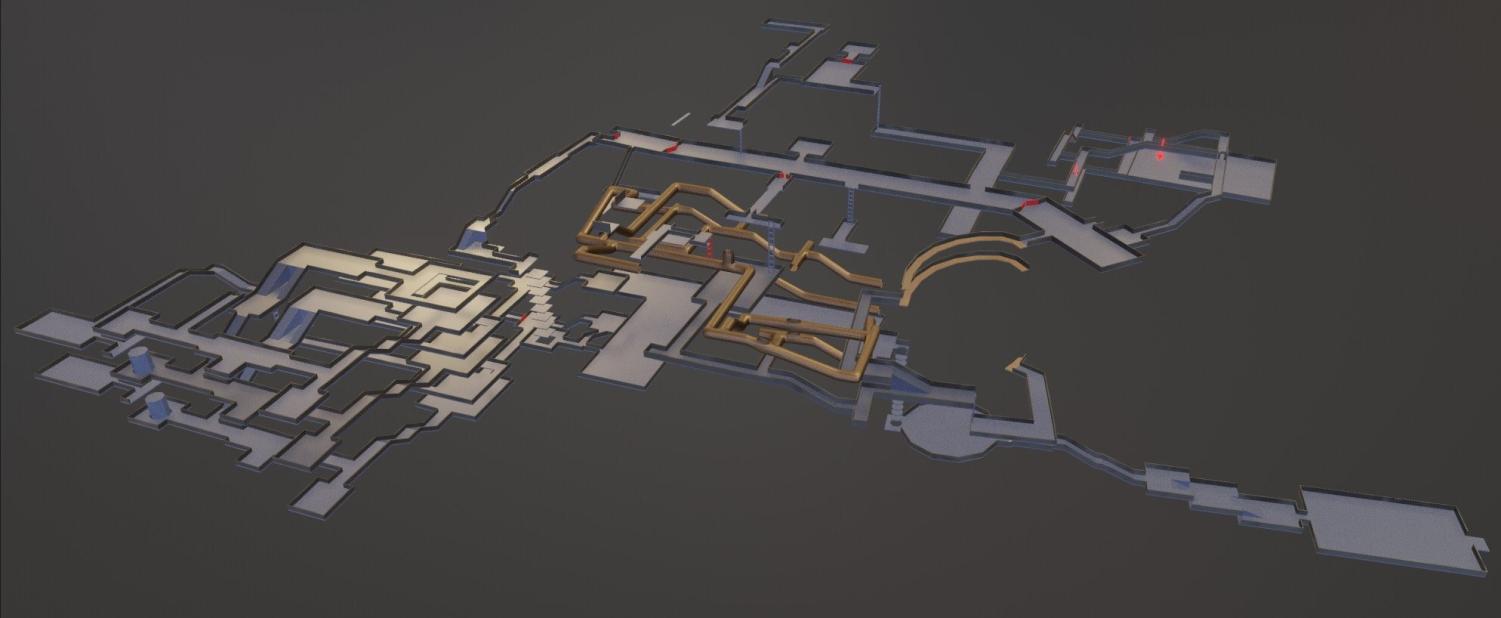
Because Elden Ring is an open world game, there is a great deal of effort put into making sure that players can progress through it at a comfortable pace. This is achieved in a very creative way: instead of presenting players with enemies of linearly increasing difficulty, the game instead puts beginning areas right next to mid or late-game ones. In doing this, players are taught from very early on that it’s okay to skip a boss or area and come back once they are properly leveled for it.

The first example of this that players encounter is with an optional boss—Tree Sentinel—situated right in front of the first checkpoint. Tree Sentinel is a gigantic, heavily-armored knight on horseback that deals a significant amount of damage while also moving quite quickly. The boss is out in the open, meaning that players can run away from it at any time to go do something else—a course of action that many will take after realizing just how powerful Tree Sentinel is. I didn’t even bother fighting it until I was around ten hours into the game, at which point the fight was still a pretty even match between me and the boss.
One other key design feature in Elden Ring’s world is its retention of the level design featured in past Soulslike games in certain areas. In previous FromSoftware titles, players could only roam around on foot. Most areas were tight, with enemies around every corner and sparse, difficult-to-reach checkpoints. Although this style of level design couldn’t possibly be fully implemented in an open world game, Elden Ring uses it in select areas. When entering catacombs and most castles, players are forced to dismount their horse and cannot remount it until they exit the area once more. The horse’s removal is important, as it preserves both the Soulslike feel of Elden Ring as well as the integrity of its gameplay. Less mobility leaves less room for players to exploit the physics of the game engine and potentially make certain areas much easier to complete.
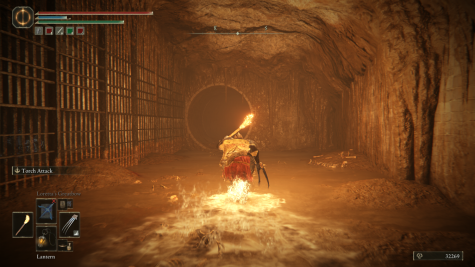
Speaking of catacombs, there are at least 16 formal catacomb areas in Elden Ring. It’s important to note that none of these are major areas—they are all optional and off the beaten path. That being said, the catacomb areas in this game contain some of the most creative level design I have ever encountered in a video game. The basic design of each catacomb is simple: A single checkpoint lies immediately within the entrance. Near this entrance, there is a closed mechanical door that can be unlocked via a lever at an unknown location somewhere within the catacomb system. Players must find their way to the lever, pull it, and double back to the entrance in order to pass through the newly opened door to fight an optional boss.
Although this is the gist of all of the catacomb areas in the game, they become increasingly complicated as the game progresses. One of my favorite experiences in Elden Ring was working my way through the Leyndell Catacombs, a vast network of complicated tunnels that concludes with an intentionally confusing test of a player’s awareness. In the final part of the catacomb, there is a set of three identical-looking floors stacked on top of each other in such a way that it seems like you’re wandering around in three massive circles. The only signal to players that the floors are different is that each floor has a different set of items and enemies. I spent about an hour in this catacomb system and was blown away by the fact that the last section of repeating floors was built without any abuse of video game rendering: the way the three floors were laid out made sense, and didn’t necessitate any cheeky off-screen rendering to pull off.
Elden Ring is full of extraordinary level design. It’s clear that FromSoftware had hundreds of different ideas that it executed all at once by compartmentalizing them in each of their respective areas. What’s even more impressive is that all of this is built seamlessly—despite all of these different ideas, Elden Ring feels like a coherent game from start to finish. There is no area that feels out of place.
Bosses and Enemies
One of the hallmarks of any Soulslike game is its difficulty. From Demon’s Souls to Dark Souls to BloodBourne to Sekiro, FromSoftware doesn’t hesitate to make its games difficult to complete—nor does it grant any handicaps to players who are having a rough time. Enemies in Elden Ring take on many forms. Some are high-damage monsters, others are giants with tons of health, and there are those that appear in groups that can number in the forties and fifties. One thing is certain: players must learn how to properly fight most enemies in order to progress. That’s not to say that fighting any normal enemy is required—none are. However, in order to level up, players must defeat enemies to gain experience points. Those who neglect to level up will have an extremely hard time dealing enough damage to bosses and enemies and won’t hold up too well against strong attacks either.
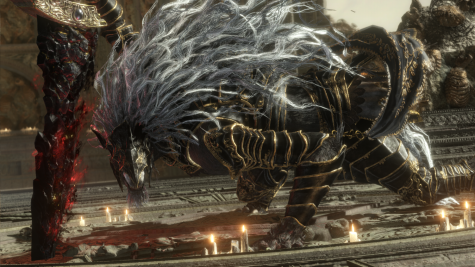
Each new area in Elden Ring presents a new set of challenges for players to overcome. One of the most obvious of those challenges is each area’s set of new enemies. Players will constantly have to learn how to fight different types of enemies as they progress through the game. Since there is very little enemy crossover between areas, players will be thrown out of their comfort zones time and time again, rarely given the chance to fight something they’ve met before. One area might have a variety of different knights, while the next could contain giant lobsters and vaguely humanoid, multi-armed monsters. This variety makes the world feel more dynamic and rich.
There’s no talking about a Soulslike game without talking about its bosses. All bosses in Elden Ring – a strong enemy that doesn’t respawn after being defeated – are further identified as being such by a giant health bar that appears on the bottom of the player’s screen. While only a handful must be defeated in order to beat the game, Elden Ring contains over 80 unique bosses. Bosses pose an extra challenge to players because of their larger set of possible attacks as well as their high damage output and health totals. Additionally, most bosses in the game have a second phase. When a boss’s health gets low enough (usually to about 50% of its total), it will begin to use an entirely new set of moves—these second phase moves are almost always much more powerful than the first phase’s moves.
Players who beat Elden Ring on their own must learn all of these attacks through countless boss fights in order to vanquish their foes. This can be a fairly brutal process when a particular boss is extremely difficult to fight, or when players respawn from each boss attempt at a checkpoint that is no small distance from where the boss lies.
It’s hard not to be in absolute awe of some of the boss designs. Many Elden Ring bosses are physically impressive and well-designed, and have movesets that are also visually appealing. Words don’t do these bosses justice, but screenshots might help paint a picture for players yet-to-be.
Weapons, Items, and More
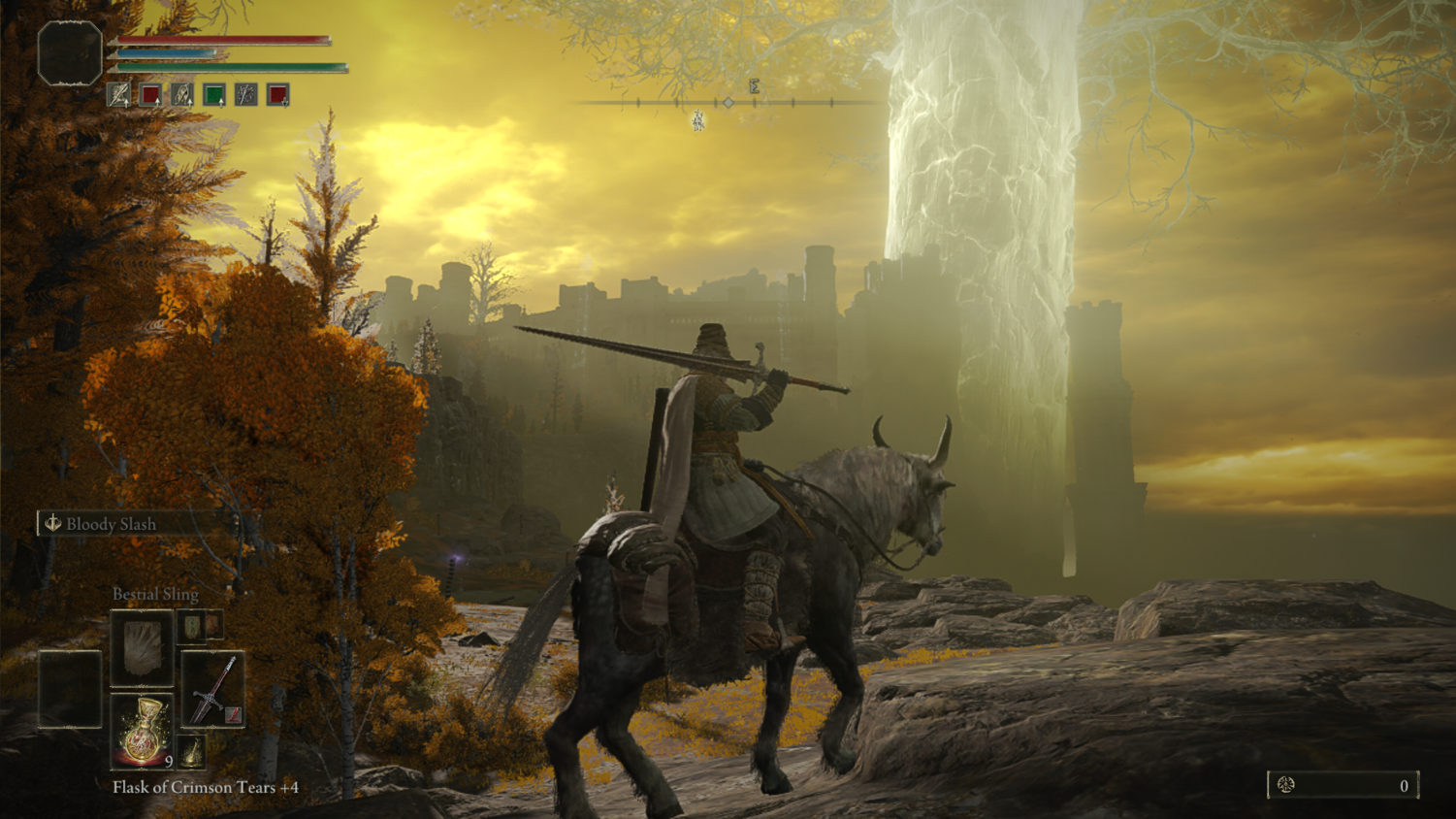
Every single piece of armor that enemies are seen wearing, every spell they cast, and every weapon they possess, can be obtained by the player. Most pieces of equipment can be looted from enemies after they are defeated, while a select few lie hidden around the world in predetermined locations.
The sheer size of Elden Ring’s arsenal of weapons means that every single player can access armaments that they will be comfortable and confident wielding. There are 309 unique weapons in the game, meaning there is not only an abundance of choices to be made, but also that there is a healthy set of different weapon types. Some players, for example, will gravitate towards using a greatbow in order to hit powerful ranged attacks, others like wielding their massive swords and axes. I completed most of my run using the Hookclaws, which are basically just wolverine claws. After upgrading them to their maximum level, I ditched them in order to try something new, and quickly found myself leveling up a massive sword.

Upgrading weapons in Elden Ring is extremely convenient. After a certain point in the game, all weapon upgrade materials become available to purchase from the game’s home base, the Roundtable Hold. There, players can give XP to a blacksmith to upgrade their equipment. This system allows for players to explore more than one or two weapons in a single run—something that hasn’t been possible in previous Soulslike games, where upgrade materials are much more scarce. This makes combat in the game far more engaging, as using a new weapon does a lot to keep the gameplay experience fresh and exciting. Moreover, players can equip items to either hand, opening up an entire world of dual wielding possibilities.
All in all, Elden Ring’s diverse set of weapons and items can be mixed and matched to fit any player’s style. Whether it’s fighting enemies from a distance with ranged attacks, casting massive lightning spells to stun and damage foes, or smashing enemies with an enormous hammer in each hand, Elden Ring offers a highly customizable experience that is unmatched in both breadth and depth.
Conclusion
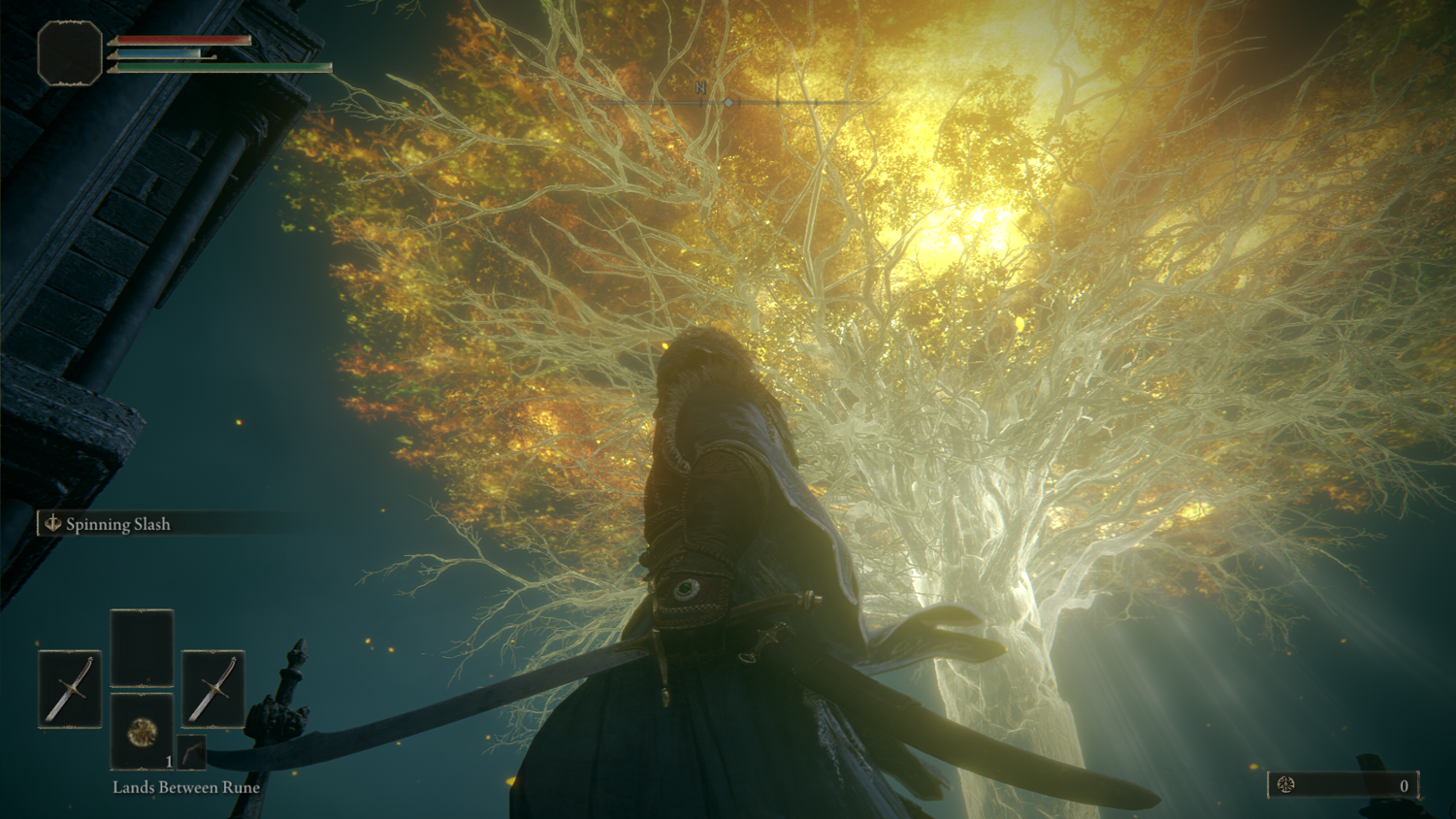
I’ll be completely honest: I played 110 hours of Elden Ring, and I’m convinced I’ve only seen three quarters of what it has to offer. It is the most immersive and thoroughly-built game I have ever played. From its detailed map to its combat system to its story, Elden Ring will likely be considered the gold standard for open world video games for years to come. It’s the best I’ve ever played by a long shot, and I highly recommend it to anyone who can get it. Even those who have never played a Soulslike game before will surely have a great time working their way through the story and world of Elden Ring.

